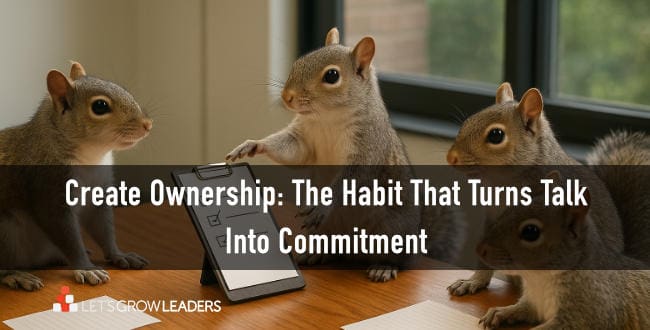No one comes to work wanting to do a bad job. Losing is stressful. When the scorecard trends in the wrong direction, how do you help your team win?
And how do you help a strong team get even better?
Focus on the game, not the score.
How to Help Your Team Win
Brian (not his real name) began the team meeting by covering the team’s scorecard and Key Performance Indicators.
“Great work on your sales KPIs, we’re in the top-tier across the board. We are so close to beating Sharon’s district. If everyone just sold one more today, I think we can do it! Also, we seem to be struggling in the customer service KPIs. We have a downward trend and there are four districts ahead of us. I need more focus there across the board. Janet, you are doing the best so whatever you’re doing keep it up! Everyone else, I need you to try a bit harder. Awesome. Thanks everyone, now let’s go make it a great day. Remember, fantastic customer service!”
If that sounds like a team huddle you’ve ever been in, you know why we have a love/hate relationship with KPIs. Brian’s team may understand the KPIs, but they don’t have a clue what they are supposed to do when they leave that meeting.
What should they DO to sell one more?
How DO they improve the customer experience?
KPIs Are Indicators, Not Action
Scorecards and KPIs provide wonderful directional indicators. Good trends point to actions worth replicating. Bad trends shine a spotlight on what must change. A hard look at the data can help you identify the best practices which will help your team win. Comparative scorecards will also help you identify outliers who need more support.
While KPIs are great directional indicators, one of the biggest mistakes we see team leaders make is talking about the KPIs INSTEAD of the BEHAVIORS needed to achieve them.
People don’t change scorecards, they change behaviors.
A focus on KPIs versus behaviors can lead to useless, even stupid, actions.
Almost any behavior applied with enough focus will create a short-term lift in results.
Micromanagement can get you there for a hot minute. Fear and intimidation will work for a while. Heavy incentives and hoopla will create a short-term lift. Ice cream and pizza can’t hurt either.
But, upward trends in KPIs without an underlying change in the right behaviors, can lead to a false sense of security.
When the fear goes away or the sugar wears off, the results go back down.
The Behaviors That Matter (Try This Approach to Change the Conversation and Up your Game)
The only way to build sustained results is to improve the underlying behaviors. Don’t ask a sales rep to make more calls if they don’t know what makes a call successful. Don’t ask a team leader to spend more time on the floor, if they don’t understand how to support and encourage their team.
So what are the right behaviors? Why not ask the team?
Let’s go back to Brian’s meeting. Sales were solid, but the customer experience was suffering. He needed his team focused on the customer experience.
What if Brian started by showing up curious?
“We’ve got a downward trend in our CX metrics, but a few of you are knocking this out of the park. In fact, Janet, you’ve had one hundred and thirty-seven customers say they would recommend you to a friend this month. What specifically are you doing that we can learn from? Who else has a best practice to share? Okay, great. Now, I’m giving everyone three index cards. I’d like each of you to pay careful attention to your interactions with customers today. At the end of the day, I want you to write your very best approach for providing a ‘wow’ customer experience. Please be as specific as possible. For example, showing up confident, energetic and sounding interested in the first forty seconds of the call.
Please give me your cards before you leave today. I’ll look at the themes overnight and tomorrow morning in our team huddle we’ll talk about what we learned.”
And of course, Mark should do a check for understanding to ensure everyone knows what they’re going to do. “So, just to ensure I’ve communicated this well. What are you going to do with the cards today? And what will we do in our huddle tomorrow?”
This easy exercise works at multiple levels. First, it ensures everyone focuses on your customer’s experience that day—as they are paying attention to their behaviors and the impact they are having. And it turns your collective conversation the next morning to best practice sharing.
Your Turn
What tools and techniques have you used to ensure the conversation focuses on behaviors?
How have you avoided the distraction of numbers and KPIs?
See Also: How to Lead When Your Team is Exhausted







0 Comments